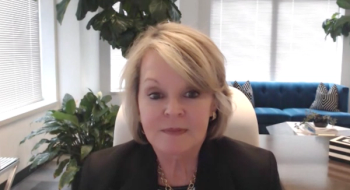
Dr Mitzi Joi Williams Discusses Clinical Trial Accessibility Challenges, Solutions
Mitzi Joi Williams, MD, of Joi Life Wellness Multiple Sclerosis (MS) Center, lists challenges in recruiting and retaining minority populations for clinical trials and discusses ways to ensure clinical trial accessibility.
Mitzi Joi Williams, MD, founder and medical director of Joi Life Wellness
Williams discussed the topic at length at the
Transcript
Are there specific challenges in recruiting and retaining minority populations in clinical trials? What approaches could be used to address these challenges?
There are definitely issues in recruiting and maintaining minority populations. Some of them are that people are often not asked to be involved in clinical trials. Also, people don't know where to find out about clinical trials, so many people with MS are not treated at our traditional MS centers. Many of them are treated in the community, so they don't know about clinical research, where it's being conducted, and how to get involved with it.
I think it's very important for us to address those issues. I think we also have to address issues of mistrust or distrust within the community. There have been a lot of egregious things that have happened across many decades within the scientific community that have been detrimental to many different populations. So, I think it's very important for us to address those, but also, as researchers, to look at the way we're conducting research to make sure that we are being inclusive of these populations.
What strategies can be used to ensure that clinical trials are accessible to patients from different regions, including rural and underserved areas?
There are lots of different strategies that can be employed, and I think it's important to recognize that this is a multistakeholder approach to really get this done. Certainly, we have to make sure that patients are educated about trials, but we can't put the onus on patients to do all of the work.
We as a scientific community have to look at the way that we are creating our trials. Are we automatically excluding groups of people due to extremely or excessively restrictive inclusion and exclusion criteria? Are we making sure that if there are things that can be done remotely, that they're being done remotely?
Also, from an industry perspective, we have to look at where we're conducting the research. If we are not conducting research in communities to reach the people that we say we're trying to serve, and we're only reaching large urban centers, we're going to miss out on a lot of people who may be very willing to participate but unable to access trials because of that.
How can clinical trial designs be optimized to account for potential disparities in health outcomes among different demographic groups?
I think it's important when looking at how we design clinical trials to try to be innovative and think outside of the box. If there is nothing that the pandemic has taught us, it's that we can do a lot of things remotely that we thought we could not do remotely.
So, looking at ways to decrease the burden on patients. It can be very expensive for someone to be involved in a clinical trial if they have to drive or get transportation to whatever center for blood draws, MRIs, for all of these different studies. If they have to find child care, elder care, if they have to miss their jobs. These are things that are expenses to patients, so we have to look at ways to offset that cost to make things more accessible.
Also, are there things that don't require people to come all the way to the center? Can blood draws be done remotely? Are there other ways that we can use digital or remote tools to get some of these assessments so that we're still getting good data, but we're also looking at real-world populations that will be affected?
Newsletter
Stay ahead of policy, cost, and value—subscribe to AJMC for expert insights at the intersection of clinical care and health economics.















































